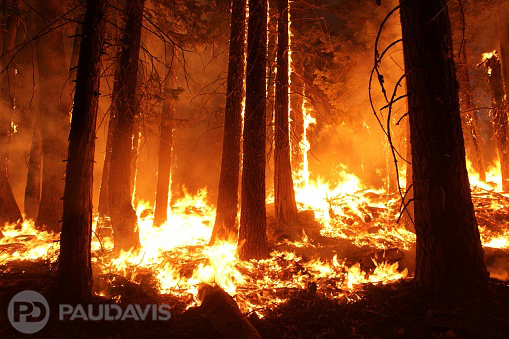
Given fuel, oxygen and a heat source, wildfires can rapidly grow into enormous, hungry beasts with terrifying power and seemingly vicious intent. Large wildfires concoct private weather systems, roaring with self-propelled winds of nearly 200 kilometres per hour that fan flames further. Their scorching temperatures preheat fuel in their paths, aiding their reach and spread. They feed voraciously off already bleak conditions like drought, dead vegetation and hot winds, speeding along at up to 23 kilometres per hour.
This summer, hundreds of wildfires ripped across British Columbia, leaving little time for evacuation. Such short notice makes pre-planning essential for personal and property safety. Follow these Seven Super Preparations to give yourselves, loved ones and belongings a fighting chance:
Build smart: For those in areas with elevated fire risks, creating a fire-resistant structure is the first line of defense. Choose fire retardant building materials for new construction or retrofitting. Tile, slate or asphalt roofing resists heat and flames better than flammable options like cedar shakes. Desirable wall materials include cinder block or adobe. Stone patios beside dwellings are better choices than wood decks.
Secure property areas: To safeguard property, starve a fire of the fuel it needs – either removing fuel or putting it out of reach. Create “fuel breaks,” or areas that will stop the spread of a fire, such as gravel driveways and stone paths. Remove dead trees, dry underbrush and branches closer than two and a half metres above the ground. If planting new trees, site them far enough apart that branches will not touch as they mature.
Secure structures: Again, the best strategy is starving flames. Select gravel instead of mulch when landscaping. Clear combustible and dead vegetation, remove vines from walls and clip branches closer than five metres from the ground. Ensure that garden hoses reach all areas of each structure. Keep water sources such as cisterns and swimming pools full.
Protect structures indoors: Install, test and maintain smoke detectors in structures, and consider installing sprinklers. When wildfires threaten, close all interior doors prior to evacuation, shut off natural gas, take down drapes and curtains, pull furniture into room centers and turn on all lights to assist firefighters.
Create an evacuation plan: Determine if your area has officially designated evacuation routes and incorporate them into a personal escape plan. Ensure the plan contains contact information for affected people, emergency responders and a designated point person outside the danger zone to serve as a central contact. Designate a meeting place beyond the risk area. Share the plan with anyone potentially involved or affected
Monitor emergency channels: Determine radio stations and other channels that will broadcast warnings in the event of a wildfire. Sign up for emergency texts or alerts sent to mobile phones.
Evacuate safely: Grab the previously prepared “grab and go” emergency kit and a copy of the evacuation plan, then drive slowly with car windows up, lights on and vents closed. Once evacuation has begun, do not turn around, return to the property or stop unless directed to by emergency officials.
